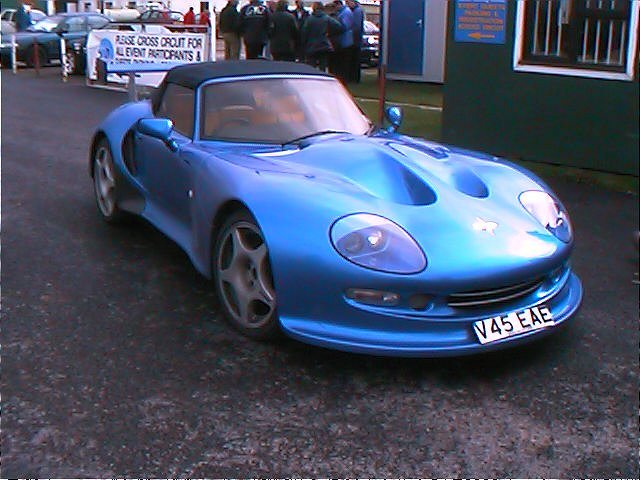Description
The Marcos Mantis Spider was the open-top companion to the 1990s Marcos Mantis coupé — a rare, dramatic and highly focused sports car that embodied the company’s distinctive approach to lightweight construction, muscular styling and driver-centred engineering. Introduced in the mid-1990s, the Mantis Spider offered the same aggressive design language and strong performance as the coupé, but with the added involvement and immediacy of an open cockpit. It sat above the LM-series track cars and below the extreme LM 500 Spider in terms of purpose, offering a blend of road usability and raw, analogue excitement.
The Mantis Spider was built on the same square-section tubular steel chassis used across Marcos’s 1990s range. This structure delivered excellent rigidity thanks to its heavy triangulation and wide sills, making it suitable for both road and track use. While heavier than the plywood monocoques of the 1960s, the chassis was far stronger and better suited to modern crash requirements and the high torque loadings of contemporary V8 engines. The Spider’s open-top configuration necessitated additional strengthening around the transmission tunnel and sills, but careful engineering kept the weight gain modest and preserved the car’s characteristic responsiveness.
The bodywork was formed from GRP composites, with some versions incorporating carbon-reinforced sections. The styling followed the bold, angular Mantis coupé template: a long bonnet with deep cut-outs, pronounced wheelarches, a wide stance and short rear deck. With the roof removed, the Spider’s proportions became even more striking. The steeply raked windscreen, exposed cockpit and minimal rollover hoop emphasised the car’s low centre of gravity and gave it a powerful, purposeful appearance. The design was unmistakably Marcos — unconventional, visually intense and impossible to mistake for anything else on the road.
Power came from the same Ford-sourced 4.6-litre “Modular” V8 used in the Mantis coupé. In standard tuning, the engine delivered around 320 horsepower, with strong low-end torque and a smooth, muscular delivery typical of American V8s. Mated to a five-speed manual gearbox, the 4.6 provided brisk acceleration and a top speed approaching 160 mph depending on gearing. The noise, especially with the roof removed, was a key part of the car’s character — a deep, hard-edged rumble that added greatly to the sense of drama.
Suspension was fully independent, using double wishbones and coil-over dampers at all four corners. The geometry was designed to deliver sharp responses without nervousness, and the Spider retained the Mantis range’s reputation for stable high-speed behaviour. The chassis tuning struck a balance between firm control and acceptable ride quality, making the car surprisingly usable on ordinary roads. Steering was direct and communicative, aided by the low mass over the front axle, and large disc brakes provided strong stopping power suitable for both spirited road use and occasional track outings.
The interior followed the coupé’s theme of purposeful but comfortable minimalism. Deep, contoured sports seats, a compact dashboard with clear instrumentation and exposed structural elements reflected the car’s sporting intent. With the open cockpit, the driving experience became even more immersive: visibility was excellent, the sense of speed heightened, and the proximity to the mechanical elements created a raw, authentic feel. Weather protection was basic, with a simple soft-top that was adequate for occasional use but clearly not the car’s focus.
On the road, the Mantis Spider delivered a vivid and engaging experience. The combination of strong V8 torque, lightweight construction and open-top layout made it feel fast even at moderate speeds. The chassis’s rigidity gave it confidence in fast corners, and its balance encouraged enthusiastic driving. It was not a subtle car — every input, every gearshift and every surge of acceleration felt immediate and unfiltered. Enthusiasts valued it for exactly that reason.
Production numbers were extremely low, as Marcos built the Mantis Spider in tiny batches and often to individual customer specification. This rarity has made surviving cars especially sought-after. While the coupé was the more common version, the Spider is arguably the more desirable due to its immersive driving experience, striking appearance and rarity.
Today, the Marcos Mantis Spider stands as a symbol of the company’s 1990s resurgence — bold, unconventional and built with uncompromising driver focus. Combining dramatic styling, potent V8 performance and a raw open-air character, it remains one of the most charismatic British sports cars of its era and a perfect expression of the Marcos philosophy of individuality and involvement.

